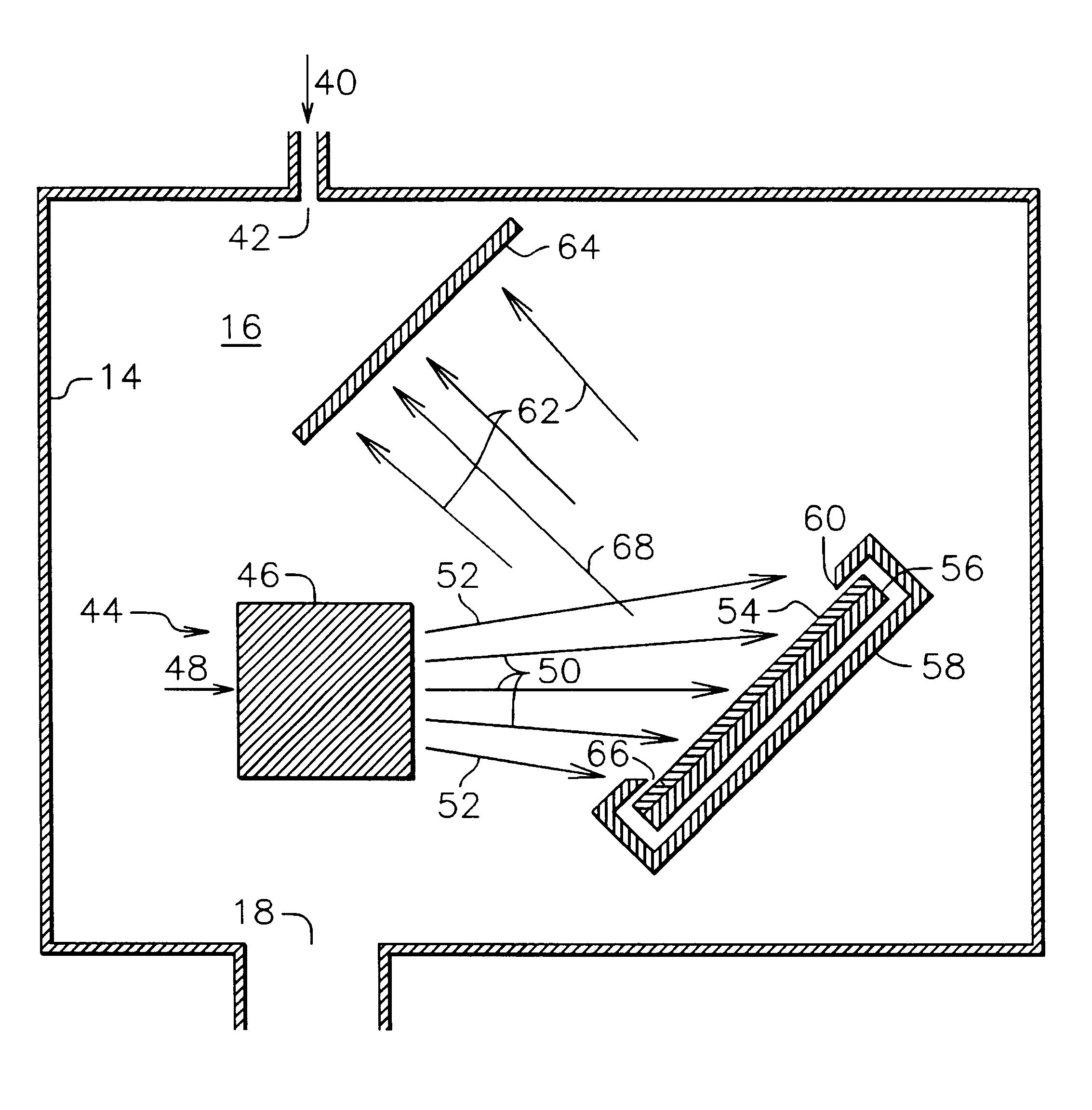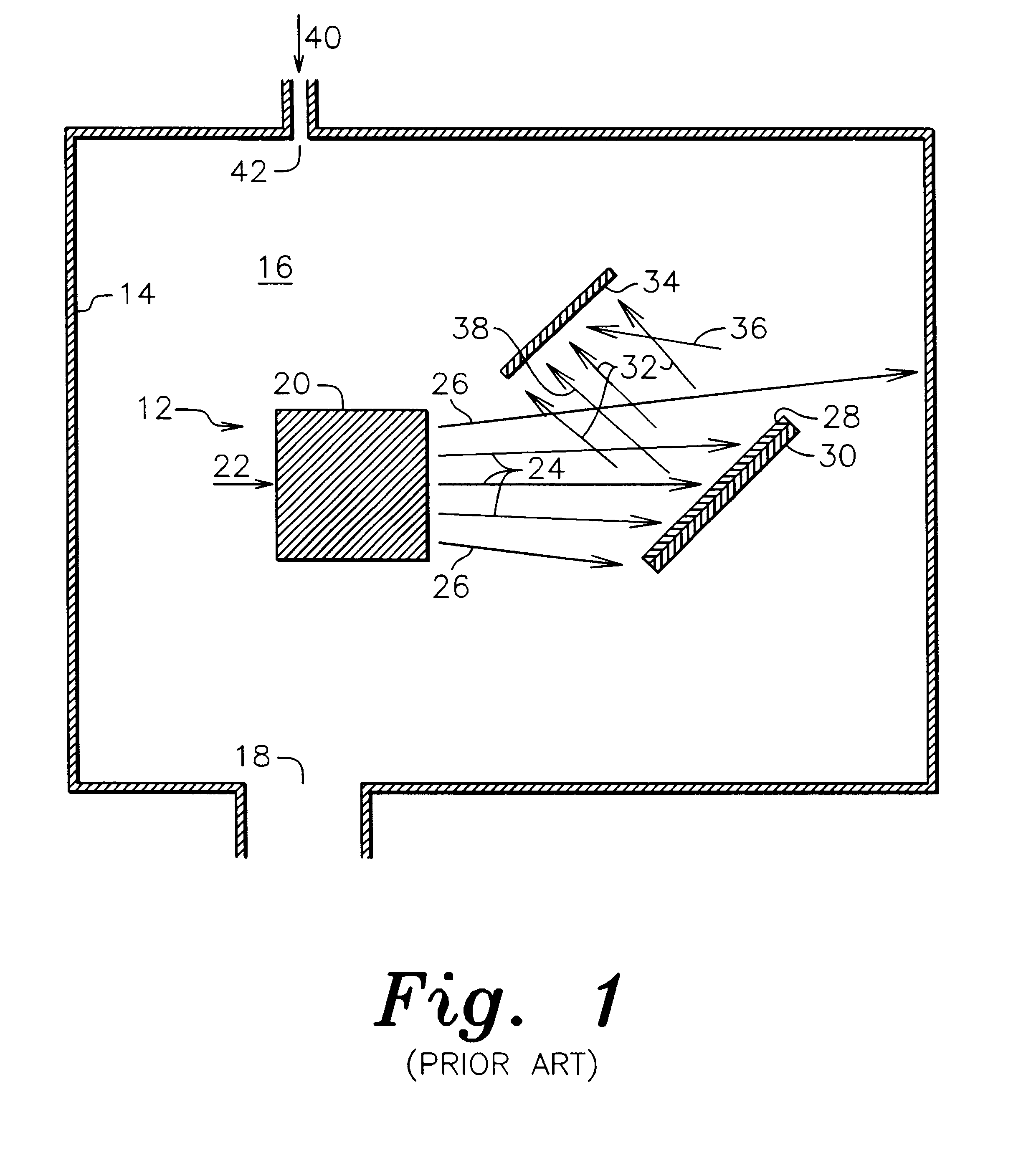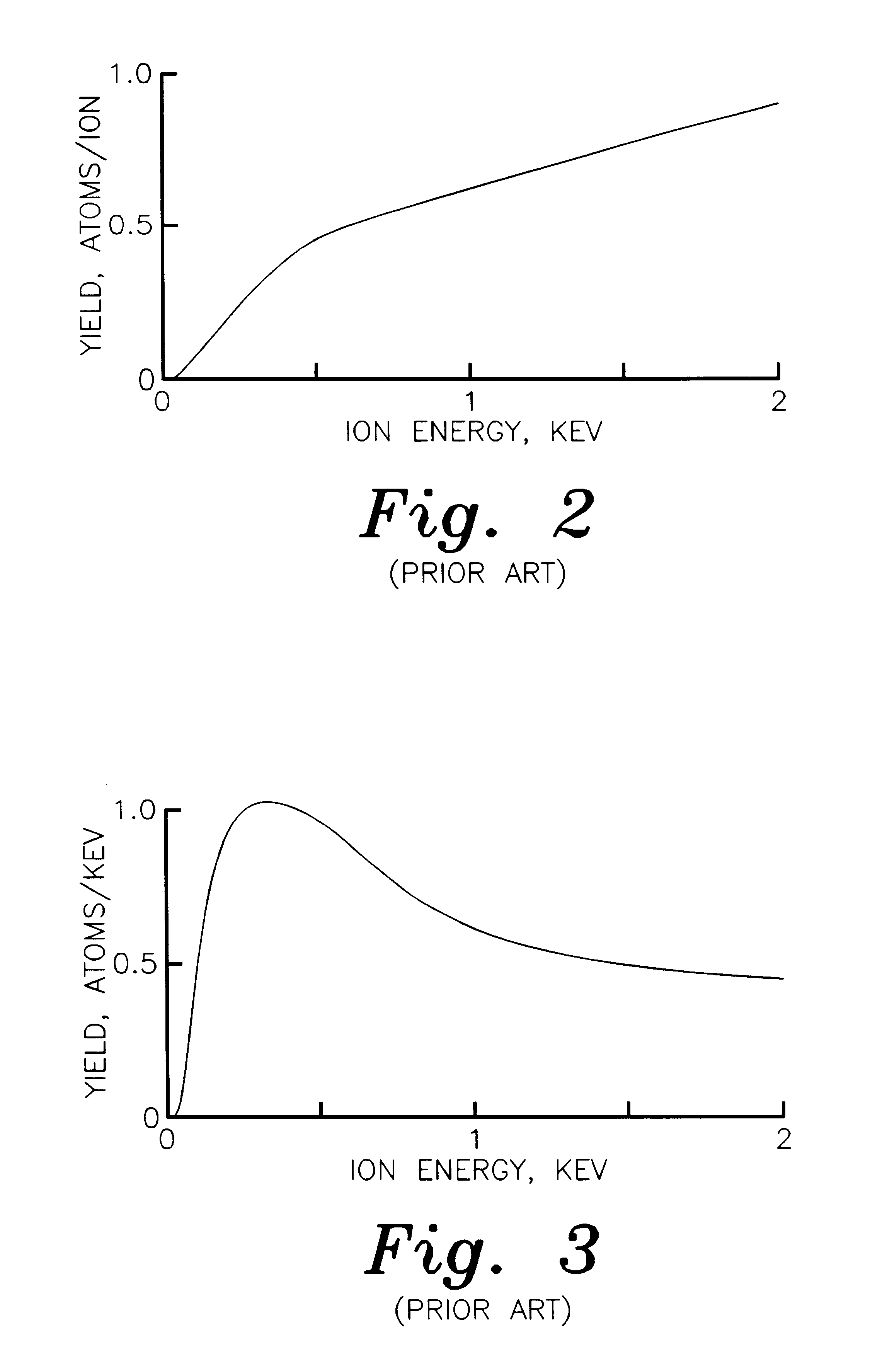Apparatus for sputter deposition
a technology of sputter and apparatus, which is applied in the direction of electrolysis components, vacuum evaporation coatings, coatings, etc., can solve the problems of reducing the quality of the film deposited by the apparatus shown in fig. 1, other hardware and contributing to the contamination of the deposited film, and the material out of which the aperture is formed becomes a source of extraneous sputtering and contamination, so as to reduce the gas load for pumping and reduce the effect o
- Summary
- Abstract
- Description
- Claims
- Application Information
AI Technical Summary
Benefits of technology
Problems solved by technology
Method used
Image
Examples
specific example
As a specific example of operation, a configuration similar to that shown in FIG. 4 was operated with a commercial end-Hall ion source constructed in accord with U.S. Pat. No. 4,862,032-Kaufman, et al., commercially available as Mark I from Commonwealth Scientific Corporation, Alexandria, Va. This ion source had an external diameter of 64 mm and an overall length including cathode of 106 mm. The target diameter was 95 mm. The extension of the centerline of the ion source passed through the center of the target and had an incidence angle of 45 degrees with that target, approximately as shown in FIG. 4. The ion source was spaced 80 mm from the center of the target. The discharge current of the ion source was 1.0 ampere at a discharge voltage of 38 volts and an argon gas flow of 11 sccm (standard cubic centimeters per minute). The mean ion energy at that discharge voltage was estimated at 20-25 eV. The low discharge voltage was achieved with an electron emission from the cathode of 2.8...
PUM
| Property | Measurement | Unit |
|---|---|---|
| energy | aaaaa | aaaaa |
| pressure | aaaaa | aaaaa |
| energy | aaaaa | aaaaa |
Abstract
Description
Claims
Application Information
 Login to View More
Login to View More - R&D
- Intellectual Property
- Life Sciences
- Materials
- Tech Scout
- Unparalleled Data Quality
- Higher Quality Content
- 60% Fewer Hallucinations
Browse by: Latest US Patents, China's latest patents, Technical Efficacy Thesaurus, Application Domain, Technology Topic, Popular Technical Reports.
© 2025 PatSnap. All rights reserved.Legal|Privacy policy|Modern Slavery Act Transparency Statement|Sitemap|About US| Contact US: help@patsnap.com



